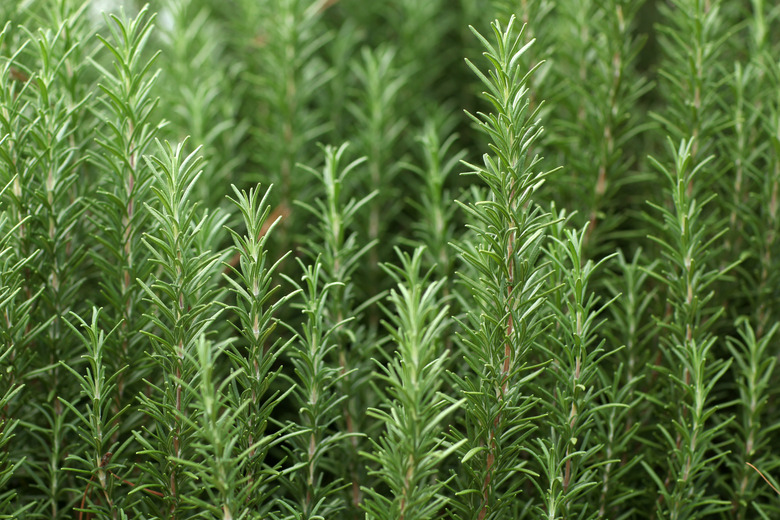Difference Between Rosemary And Thyme
We may receive a commission on purchases made from links.
What is the difference between rosemary and thyme? Thyme (Thymus spp.) and rosemary (Salvia rosmarinus, formerly Rosmarinus officinalis) both traditionally belong in the herb garden, but with an understanding of their different growth habits, you can use these herbs effectively as ornamentals. Thyme is a perennial in U.S. Department of Agriculture plant hardiness zones 4 through 9, while rosemary is a perennial in USDA zones 7 through 11. Plant-specific hardiness varies, depending on species or cultivar for both types.
Rosemary and Thyme Appearance
Rosemary and Thyme Appearance
Thyme has small, rounded green leaves that feel soft between the fingers while rosemary has stiff needlelike leaves. Rosemary grows on straight stalks that change from green to woody as the stalk matures. Tender young thyme stalks are thin especially early in the growing season. Like rosemary, thyme stalks mature to a brittle, woody consistency. Rosemary shrubs can get up to 6 feet tall and 4 feet wide, while thyme grows 3 to 12 inches tall and 12 inches wide.
Warm and Dry
Warm and Dry
Rosemary, native to the Mediterranean, and thyme, originally from southern Europe, are both well adapted to hot, dry summers and mild, damp winters. Thyme can tolerate freezing weather down to minus 20 degrees Fahrenheit compared to rosemary, which can't tolerate temperatures much below 15 degrees. You can add mulch around both types of herbs to give them some insulation in the colder months.
When it comes to water, both thyme and rosemary prefer dry soil over wet sites. Too much water in the soil can cause root rot, which often kills the plant. Well-draining soil helps to prevent the soil from getting waterlogged, as does waiting for the soil to dry out before watering again. Both of these aromatic herbs make a good fit for a water-wise garden. Rosemary and thyme both grow best in full sun most of the day.
Uses for Rosemary and Thyme
Uses for Rosemary and Thyme
Growing thyme in your garden adds an excellent edible, fragrant and green ground cover. For an especially low-growing variety, try creeping thyme (Thymus serpyllum) which grows in USDA zones 4 through 9. It grows 3 inches tall and is a smart choice for between paving stones, as a ground cover or growing over a wall.
Rosemary, with its woody upright growth, is best suited as a hedge. Use it to edge a pathway. As people brush past, they can smell the aromatic leaves. In the herb garden, orient rosemary in the background and keep thyme up front. Or, choose a trailing rosemary, such as Irene (Salvia rosmarinus 'Renzels' IRENE, USDA zones 7-10) to spill over a wall or container.
Culinary Herb Harvest
Culinary Herb Harvest
These two perennial woody herbs provide year-round harvest in mild climates. Pinch off or cut the branch tips with pruning shears as you need them. Harvest only what you need, leaving several inches of the stem on the plant for continued growth. Harvesting also stimulates growth and encourages a bushy shape.
While you can find a variety of ornamental thyme species, look for English thyme (Thymus vulgaris), which grows in USDA zones 5 through 9, for the culinary herb garden. Rosemary cultivars bred for their taste include 'Salem,' 'Well-Sweep Golden' and 'Spice Island.' These grow best in USDA zones 8 through 10.
